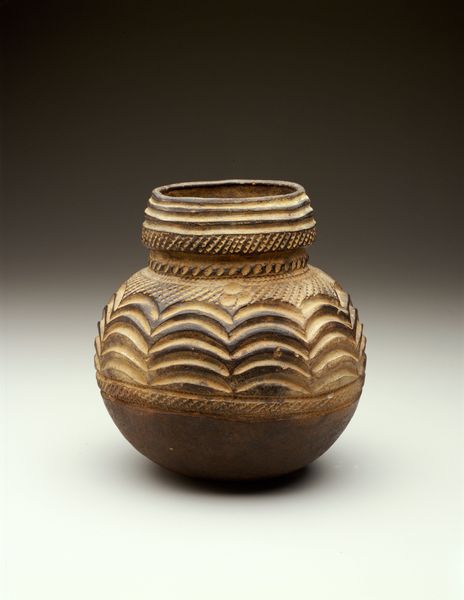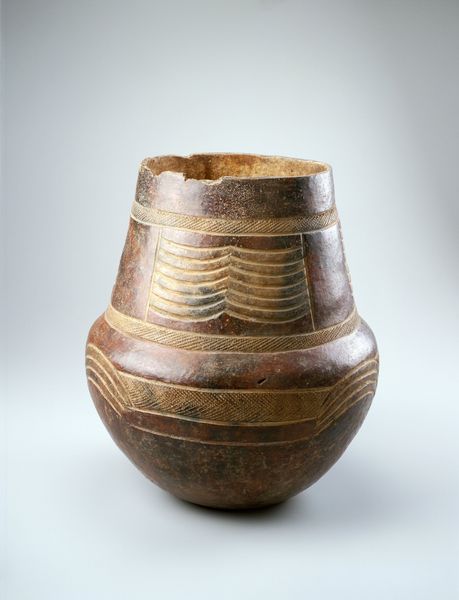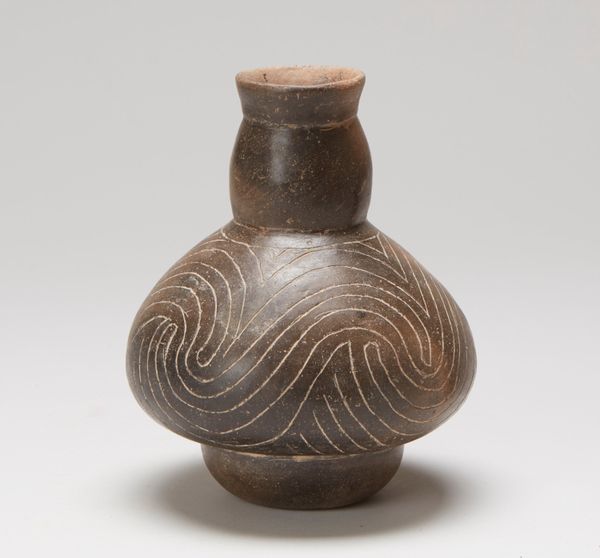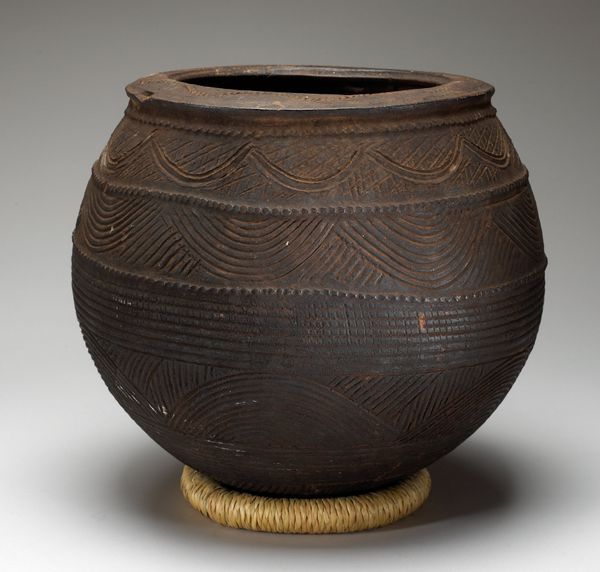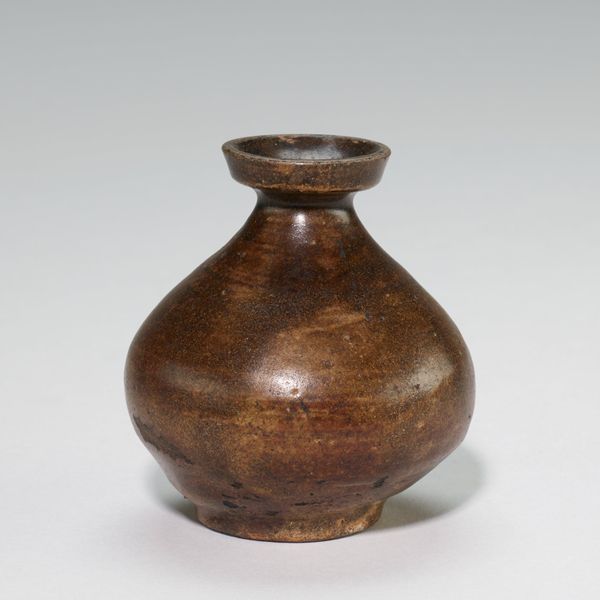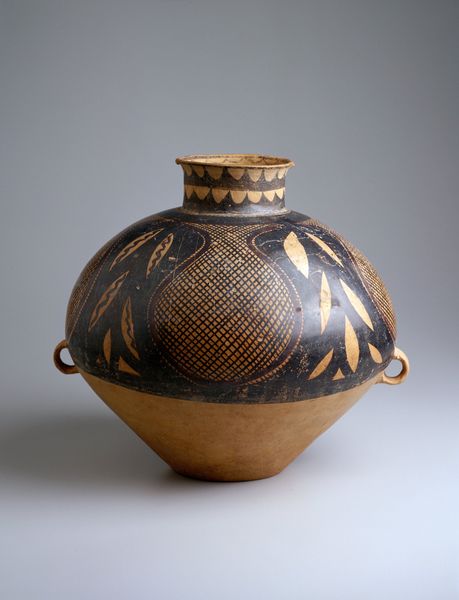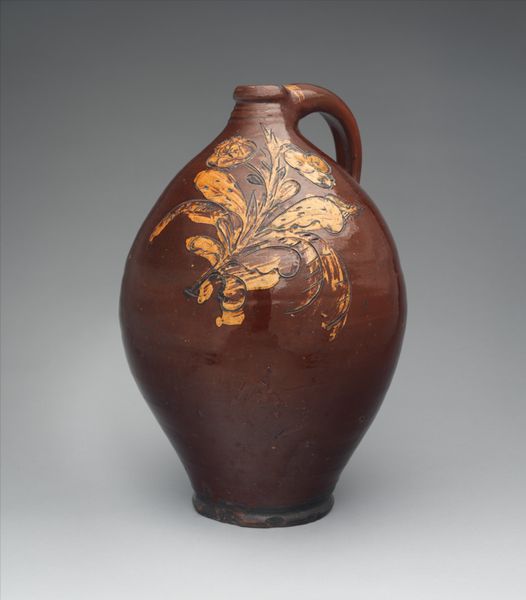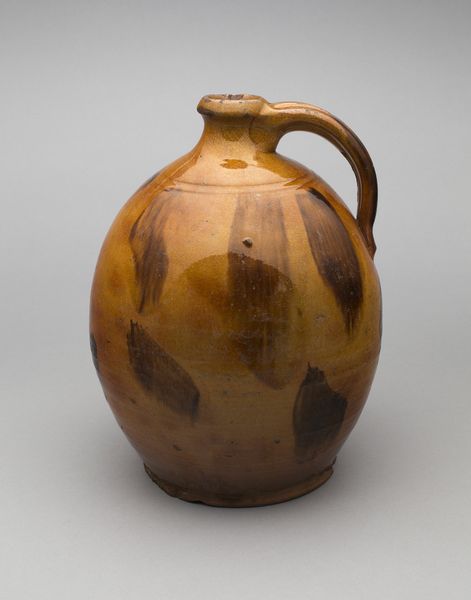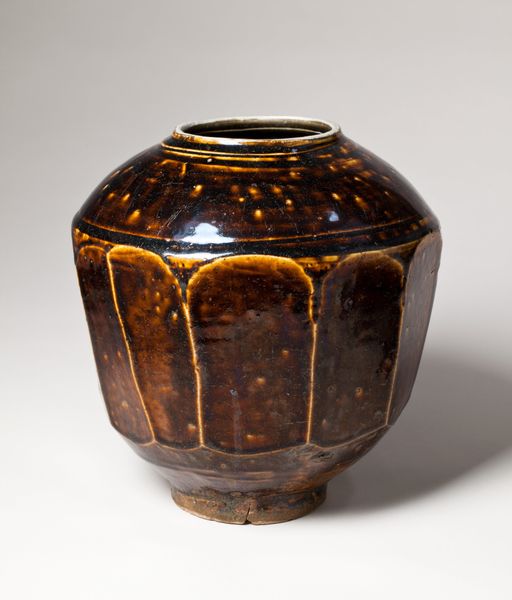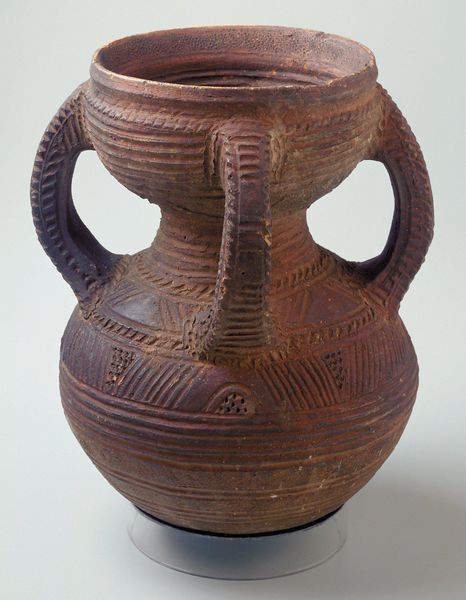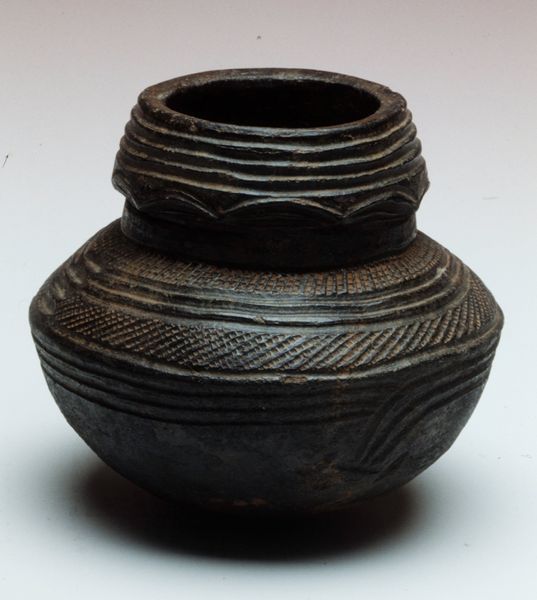
ceramic, earthenware, sculpture
#
ceramic
#
earthenware
#
stoneware
#
sculpture
#
ceramic
Dimensions: 28 1/2 x 18 3/4 in. (72.39 x 47.63 cm)
Copyright: Public Domain
Curator: This earthenware sculpture, created by a Kurumba artist around the mid-20th century, is titled "Vessel." It resides here at the Minneapolis Institute of Art. Editor: My immediate impression is its grounding effect. The earthy tones and slightly rough texture evoke a strong sense of connection to the earth. It also seems to occupy a liminal space between sculpture and utilitarian object. Curator: Indeed. Works such as this are very important in the community since vessels form an essential element in daily activities, reflecting cultural traditions of gathering and storing vital resources. What catches your eye formally? Editor: Definitely the incised linear patterns wrapping the surface. These meandering lines almost read as abstract landscape depictions. They create a visual rhythm, a dance around the volume of the vessel. What about its institutional context interests you most? Curator: I am interested in exploring how the vessel's presentation here shapes public perceptions. Its display raises questions of how cultural heritage is valued and commodified within museum spaces. How can we ensure its significance remains respectful? Editor: It strikes me, too, how the vessel’s rounded form contrasts with its supporting feet, adding an interesting spatial element to what otherwise could be considered as an unremarkable silhouette. This seemingly simple design creates a captivating dynamism. Curator: I think that speaks to how artistic value can intersect with or diverge from functional utility in this particular space. The museum setting alters our reading of this object, it transforms an everyday item into an aesthetic artifact. Editor: It’s an evocative encounter that highlights the power of simple forms and reminds us to find artistic value in utilitarian objects. Curator: Yes, this journey through "Vessel" highlights how crucial dialogue between artistic and societal perspectives helps enhance our experience of artifacts like this one.
Comments
minneapolisinstituteofart almost 2 years ago
⋮
Large jars like this one, inherited via the chiefly female lineage, signaled the owner’s privileged status. Designed to preserve selected seeds, they are sometimes called “granaries,” yet they could also store a woman’s valuables, particularly textiles. The raised patterns on the surface, unique to each vessel and representing the abdominal scarifications worn by Kurumba women, highlight the personal connection between the owner, the vessel, and its contents.
Join the conversation
Join millions of artists and users on Artera today and experience the ultimate creative platform.

